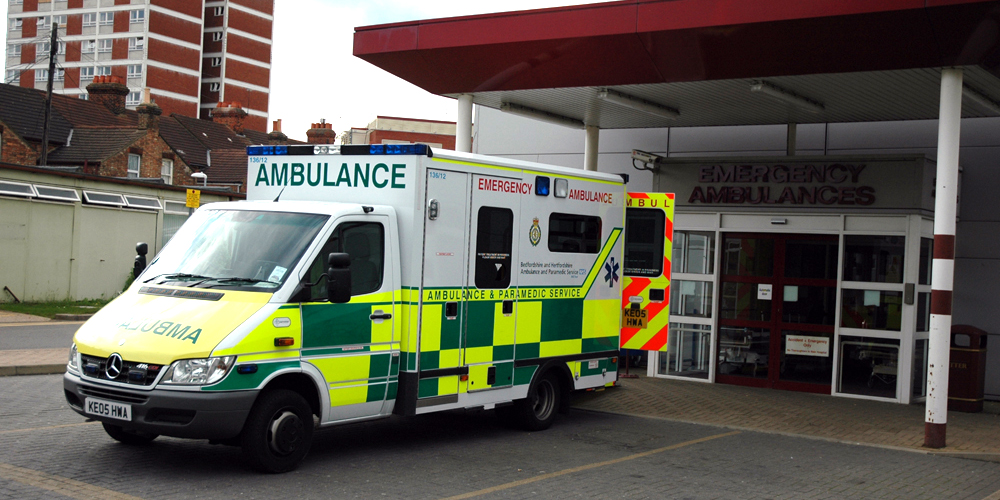The biggest attack on the NHS
No one disputes that something needs to be done to solve the crisis in the NHS. When the deaths of two patients after long waits on trolleys in hospital corridors in January prompted the Red Cross to declare the NHS...
No one disputes that something needs to be done to solve the crisis in the NHS. When the deaths of two patients after long waits on trolleys in hospital corridors in January prompted the Red Cross to declare the NHS was facing a “humanitarian crisis”, as hospitals and ambulance services struggled to keep up with rising demand, it was clear to most of us that the NHS was past breaking point.
The whole system is creaking. Trusts are tumbling further into the red. General practice is on its knees and A&E departments are full to bursting.
Yet rather than give the NHS the money it so desperately needs to survive, the Five Year Forward View means the whole service has at least £22bn of efficiency savings to deliver in return for the paltry £8bn given by the chancellor.
Sustainability and transformation plans (STPs) have been described as the biggest attack on the NHS you’ve never heard of.
And that’s because in March 2016 NHS England began organising yet another drastic reorganisation of the NHS without anywhere near the scrutiny and fanfare of Andrew Lansley’s disastrous top-down reorganisation of the NHS under the coalition government.
History is already repeating itself – the STP’s aims are the stuff of fantasy rather than reality. But the plans, largely kept under wraps, are progressing at lightning speed without consultation with professionals or the public.
This time the NHS in England has been geographically divided into 44 STP areas or ‘footprints’ with populations between 300,000 and 3 million, intended to implement the Five Year Forward View plan for the NHS until 2020. These areas were locally agreed between NHS Trusts, local authorities and Clinical Commissioning Groups (CCGs).
STPs are the mechanism to deliver future healthcare in England. They promise to improve health outcomes and quality of service at the same time as delivering further savings. Yet we all know savings means cuts.
The huge footprint areas– some including as many as 12 CCGs – have been told to ‘return the system to aggregate financial balance’ as well as improving ‘quality and safety’, shoring up general practice and rolling out a seven-day NHS.
So the government has set a mission impossible which our hospitals have no choice but to accept. To receive funding each STP footprint has to show how it is able to balance its books. A catch 22 if ever there was one.
My consistency is in the footprint area encompassing Bedfordshire, Luton and Milton Keynes (BLMK). Twelve NHS organisations and four local councils have been working together to find ways of improving and modernising services to meet the demands of the STPs. In its submission to NHS England, the BLMK plan states:
“Almost one million people live in Bedfordshire, Luton and Milton Keynes – three very different places that are also diverse within themselves. These differences affect what local people need from their health and social care services. For example, in Milton Keynes, services must meet the needs of one of the most rapidly growing populations in the country. In Bedford Borough and Central Bedfordshire, services must meet the needs of a population with a higher than average number of people aged over 75. And in Luton, services must meet the needs of one of the most vibrant and ethnically diverse populations outside of London.”
It’s an extraordinarily difficult task to meet these vastly different needs under one shared plan at a time when demand for services (largely because of our ageing population) is rising across the board. One way or another sharing already overstretched resources means that the public will lose out.
Addressing the NHS deficit – a deficit that let’s remember has been caused by chronic underfunding under the Tories – is the overriding priority for STPs and it is clear that some STP footprints are considering significant changes which are proving to be very controversial with both politicians and the public. Examples of the cost-saving measures being proposed include the closure or downgrading of some A&E units and other services deemed to be clinically and/or financially unsustainable.
But the process has been shrouded in secrecy: you won’t see these STPs anywhere. The first that communities have heard of them is when they’ve learned their A&E, children’s unit, stroke or maternity services are under threat of closure or being moved many miles away. Even hospital consultants and senior clinicians have complained of being shut out of any involvement or insight into their own hospital’s plans.
The British Medical Association warned that 23 million people could be affected by A&E closures yet still the health secretary has given no formal statement of which plans will definitely go ahead.
Already millions of pounds have been taken from frontline NHS services to pay for the vast cohort of operations managers, communications executives, administrators and financial analysts whose jobs have been created to drive forward the STPs.
The Naylor Review published in March identified ‘surplus’ NHS land which Labour’s shadow health secretary recently described as a blanket sell-off of sites which are currently being used for patient care to pay for a long-running failure to fund the NHS properly.
At the election Labour said we would halt the STP process and make sure all local plans were being drawn up in the best interests of patients. The next Labour government will reverse privatisation of our NHS and return our health service into expert public control. Labour will repeal the Health and Social Care Act that puts profits before patients, and make the NHS the preferred provider.
It is clear that, at the moment, they are not. If the government were so confident that the public would support or even benefit from these radical changes they would allow them to participate in the process. And we would have heard the prime ,minister crowing about them during the election campaign.
Make no mistake, STPs are designed to deliver cuts and will open the door for further privatisation of the NHS. To respond to a funding crisis by reorganisation is highly risky, akin to rearranging the deck chairs on the Titanic.
The NHS is in an era of unprecedented financial pressure and is trying to manage on a budget that – although it has been broadly protected so far – is in fact unsustainable. There is no convincing evidence that this colossal experiment will even save money. Sure, these plans will transform the NHS, but almost certainly not for the better if the end result is having to travel 30 odd miles to the nearest A&E, stroke or maternity unit.
STPs will mean nothing but another £26bn taken away from vital health services unless the necessary capital is made available to deliver them.
There is nothing sustainable about running a health service into the ground and there is nothing transformational about starving the NHS of the cash it needs to survive and keep life-saving care services local and accessible.

